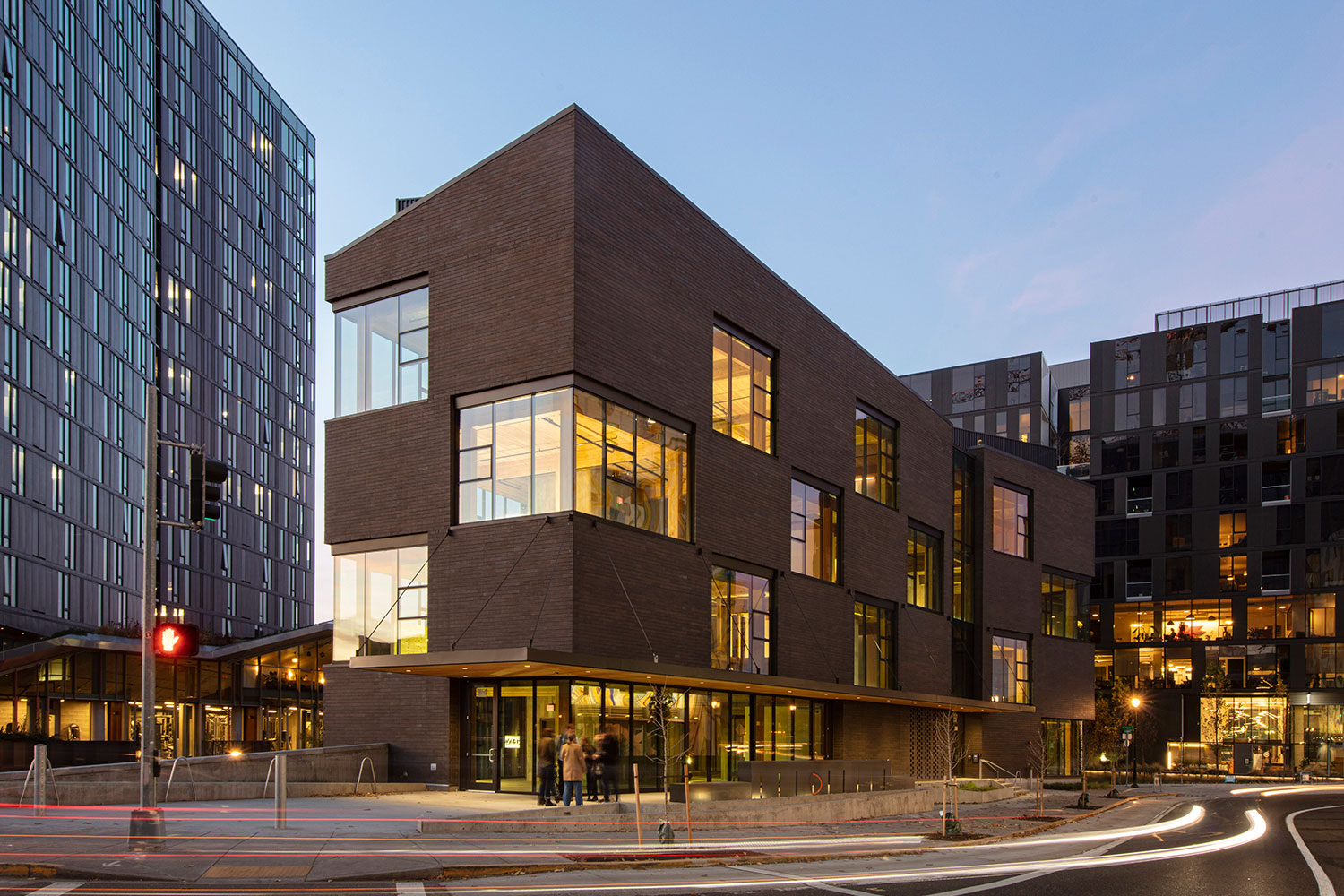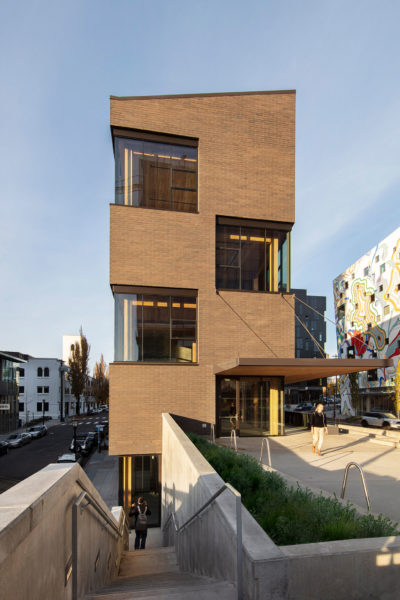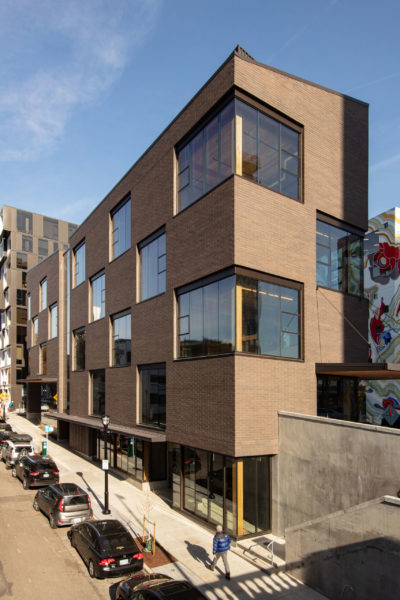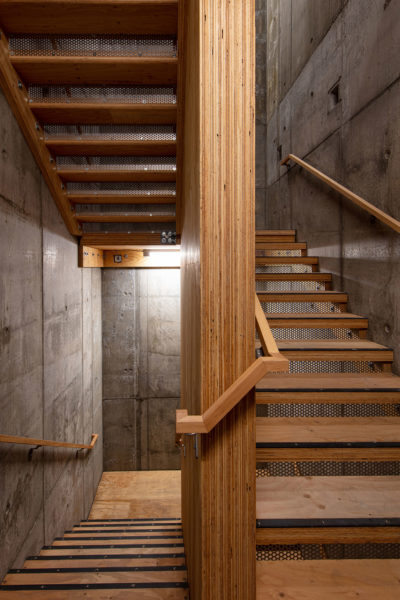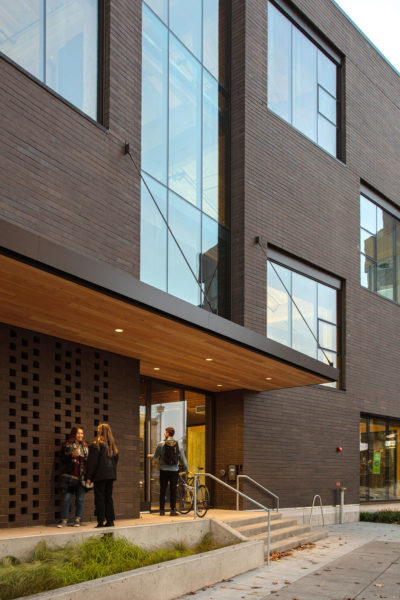Story at a glance:
- Skylab’s Sideyard revitalizes space widely considered unusable to anchor Portland’s Central Eastside neighborhood.
- Sideyard fits into its quirky neighborhood with modern details and sophisticated, local materials.
- Cross-laminated timber offers a sustainable and strong solution for the building’s structural system to make a wedge shape suited to the unique site.
From a 9,000-square-foot berm left empty after a City of Portland urban project, Sideyard emerged as a connective building between downtown Portland and the city’s Eastside. Skylab Architecture and client Key Development brought Sideyard to life with the intention of filling the essentially leftover space with something impactful to the surrounding community. With a focus on commuter accessibility, Sideyard provides retail and office space that defines Central Eastside’s developing atmosphere.
The building fits right in in its hip, urban setting, considering Sideyard’s clean lines, brick masonry, and big, modern windows cut from the exterior like a checkerboard. The building’s wedge shape and multilevel uses make it a notable and commuter-accessible building tailored to the working class.
The most important idea behind Sideyard: “Placing a quoin [or a keystone] upon an underutilized site to maximize the neighborhood’s potential,” Jill Asselineau, project director with Skylab, said in a release. Although the site is centrally located both in the Eastside community and within the city of Portland as a whole, the property was left undeveloped until Key Development noticed the location’s potential.
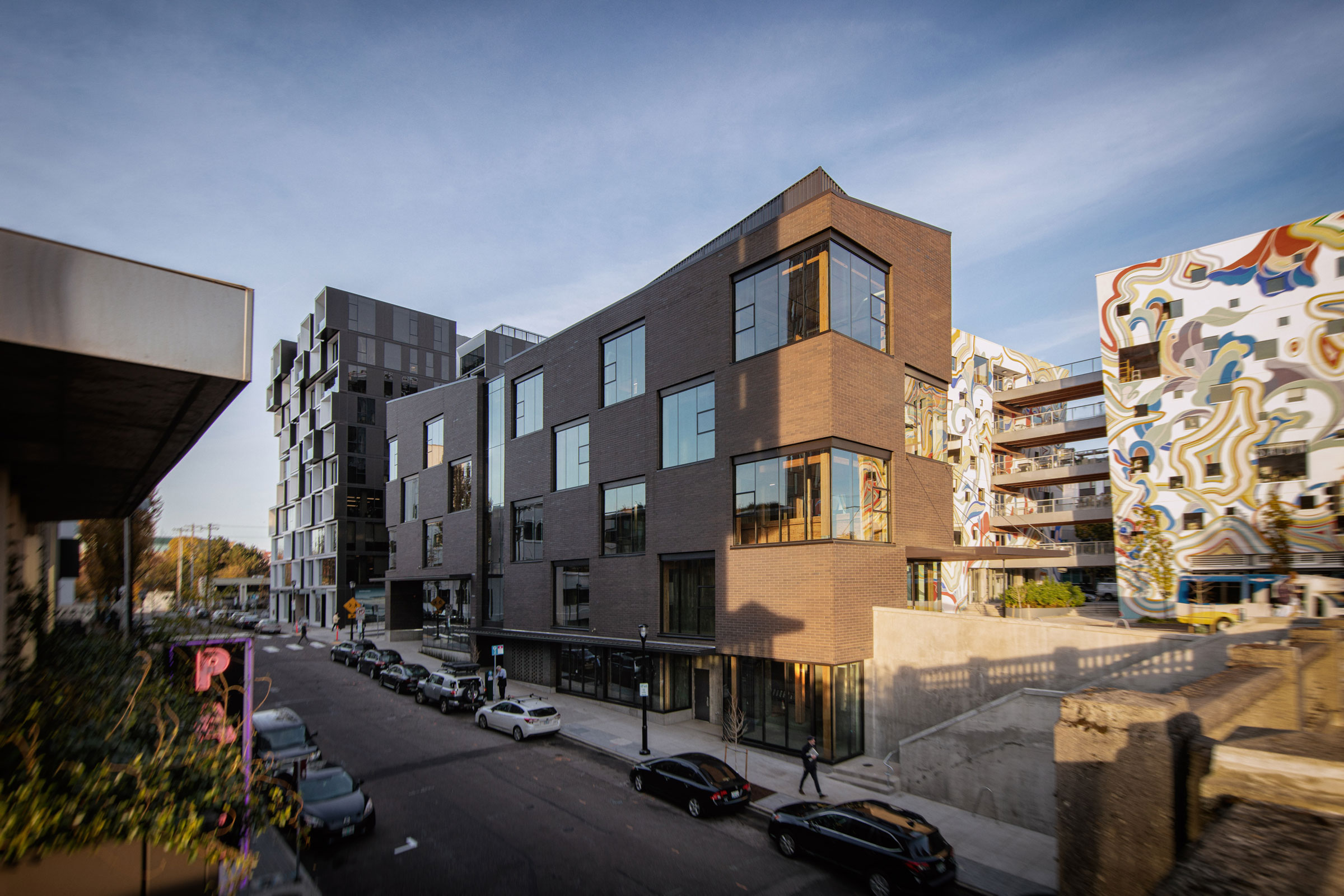
Skylab’s Sideyard project, Portland. Photo by Stephen Miller
Now, as the neighborhood develops its own character and identity, Sideyard provides a piazza space on the corner of a popular bicycle commuter route that promises a communal space that can adapt to suit the neighborhood’s needs over time.
As many of the visitors to the space are commuters, Sideyard hopes to form a gateway between Portland’s Westside urban core and the Central Eastside community. The piazza space works with the pedestrian-friendly pathways to make the elevation change from Burnside Bridge to Third Avenue accessible.
- Sideyard. Photo by Stephen Miller
- Sideyard, Portland, designed by Skylab. Photo by Stephen Miller
Under the nearby bridge and adjacent to the Burnside Skatepark, Key Development has leased a space dedicated to hosting food carts. Like the construction of the building itself, this move extends the retail environment into another leftover space in the urban setting to maximize the offerings in the community.
On the ground floor along Third Avenue, Sideyard hosts retail space in wide open storefronts. Above, open floorplans provide adaptable office/workspace. The materials and techniques used to build Skylab are rooted in the distinctive Portland and Pacific Northwest identity.
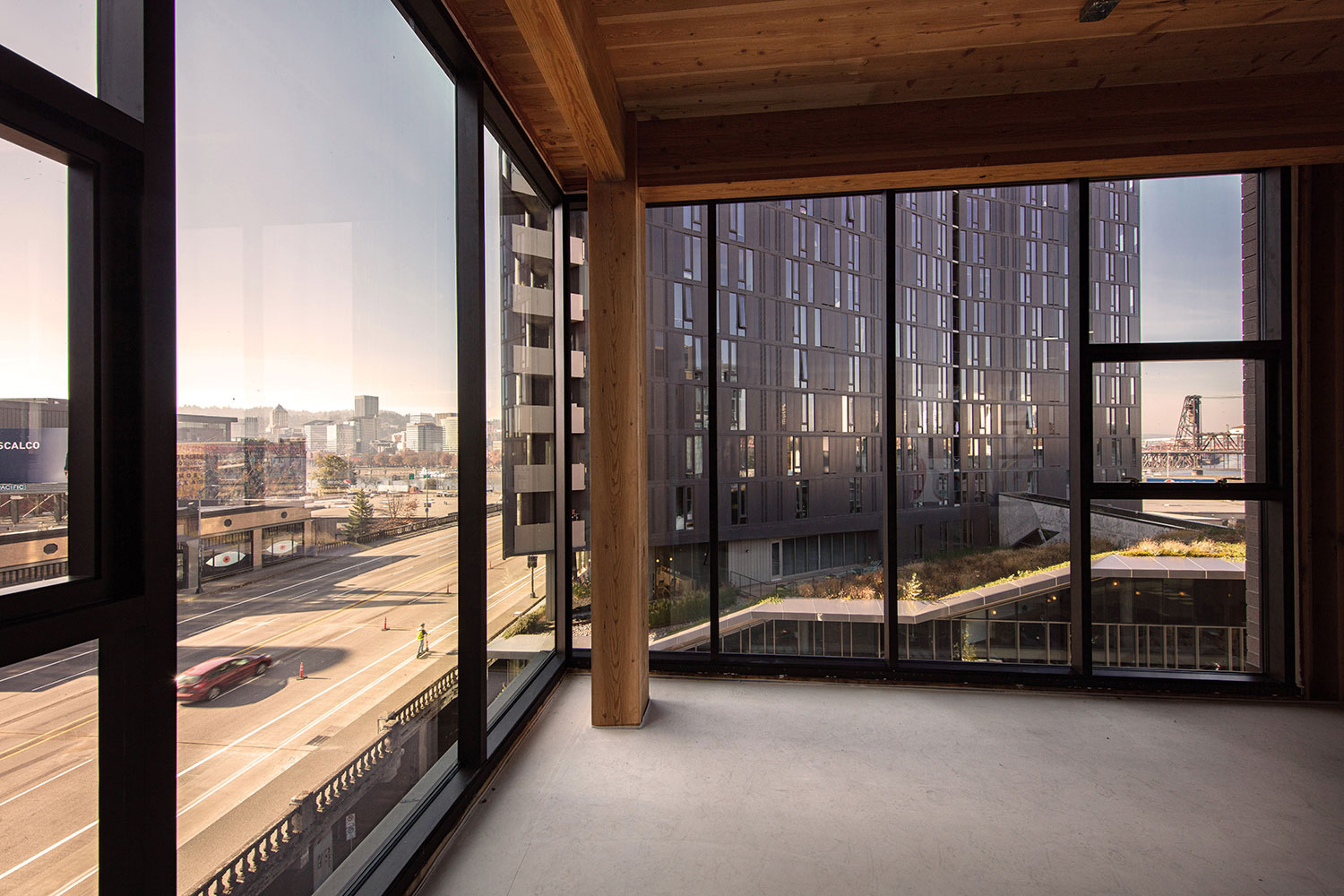
Inside Skylab’s Sideyard project in Portland. Photo by Stephen Miller
“The goal was to provide a noble stage for community activity and future public/private uses. Creating a series of comfortable and inspiring spaces simply framed with a palette of masonry, wood, glass, and concrete,” Asselineau said.
Of the distinct materials, the cross-laminated timber (CLT) structural system forms a big part of the design and aesthetics, particularly inside the building. General contractor Anderson Construction championed the timber for its regional relevance, availability, and simplicity of assembly. Utilizing CLT is time- and labor-efficient, as well as sustainable as it minimizes onsite construction waste and offers high seismic and thermal performance.
For the interior stair structure, landing, and treads, Sideyard employs mass plywood. “This project is one of the first to employ and elegantly demonstrate the potential of this wood product,” Asselineau said.
- Photo by Stephen Miller
- Photo by Stephen Miller
The focus on the structural properties of wood and the intention to activate the community in a new way ensure Sideyard’s space as an impactful and connective piece of architecture in Portland.
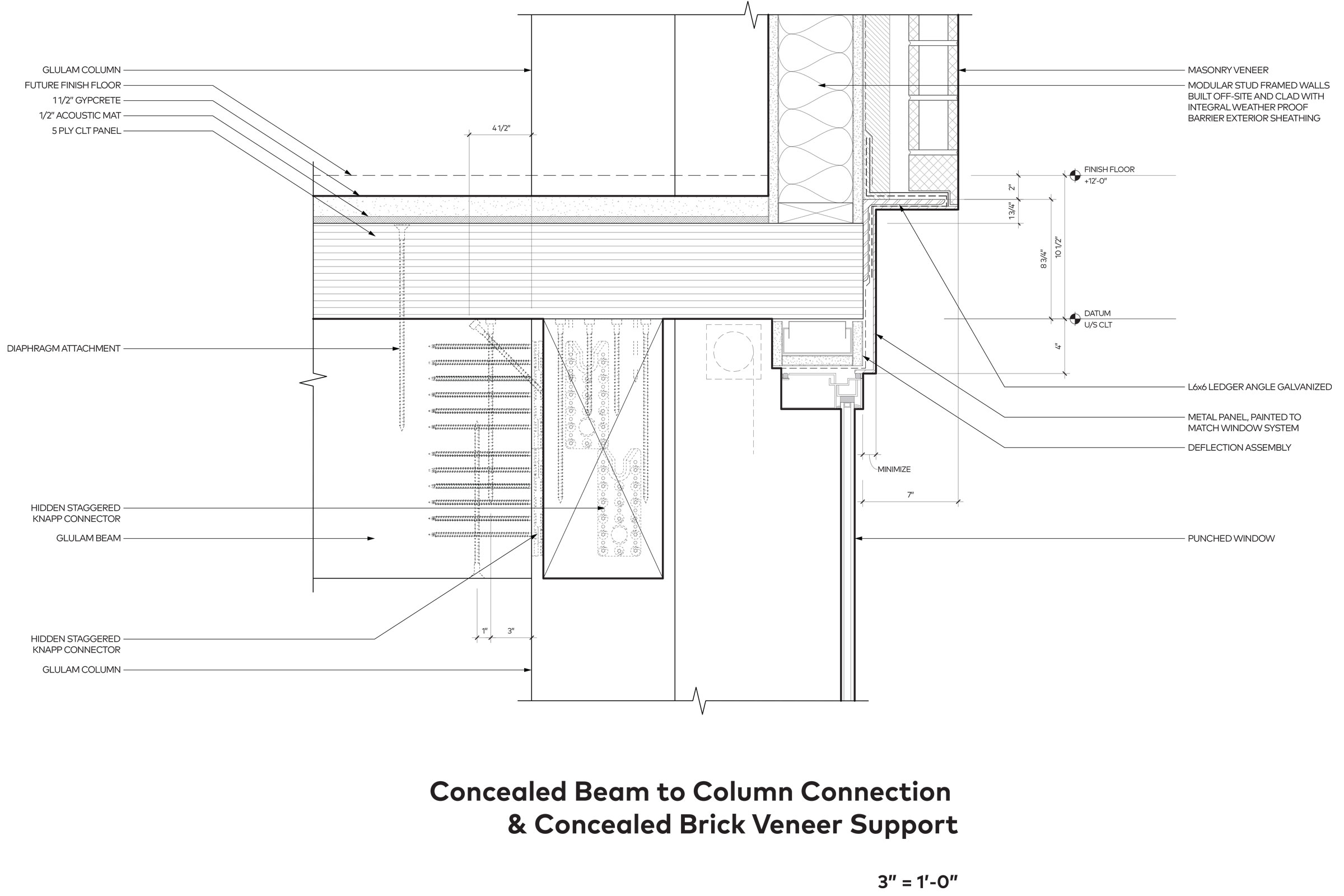
Courtesy of Skylab

Courtesy of Skylab
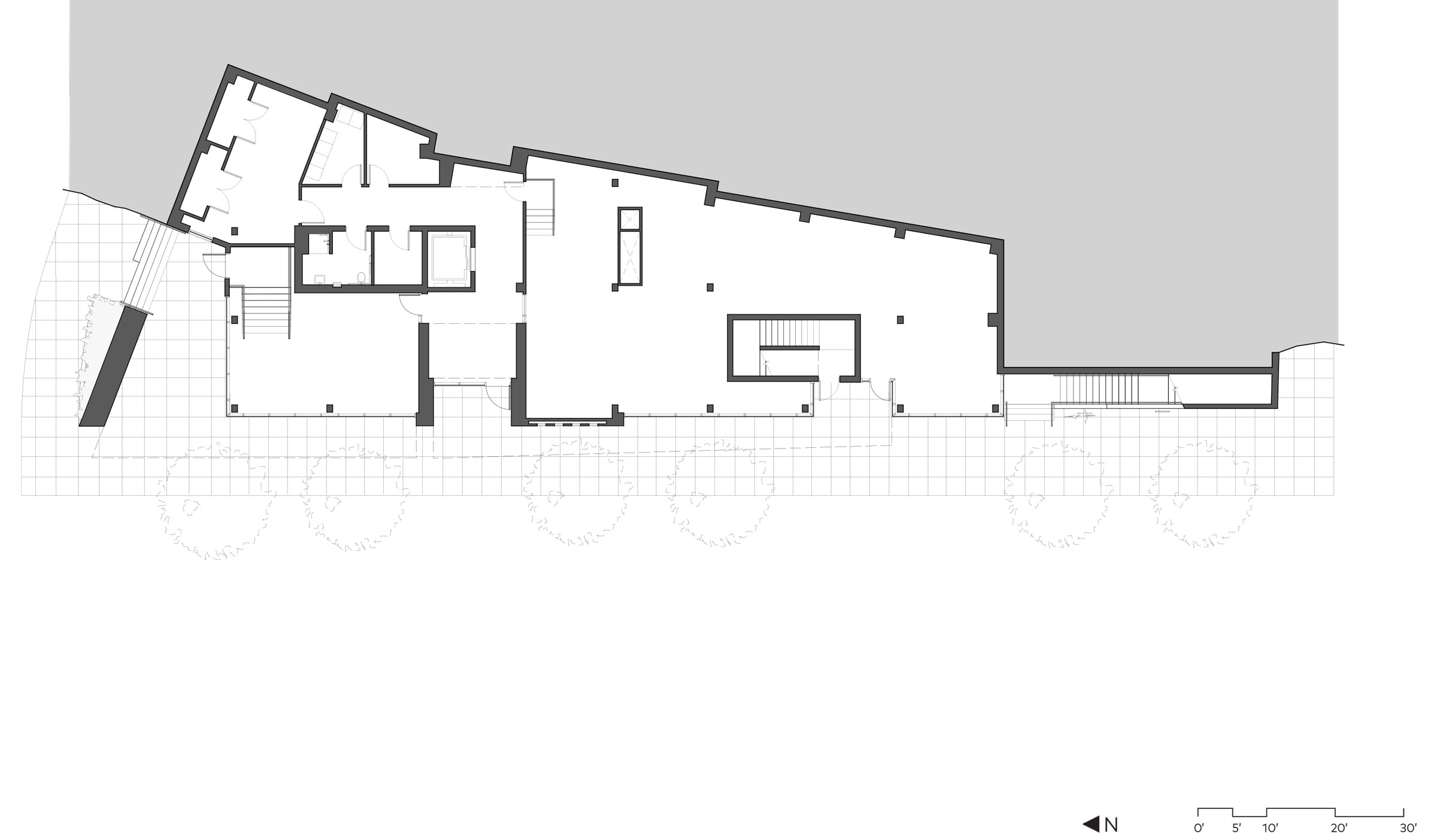
Courtesy of Skylab
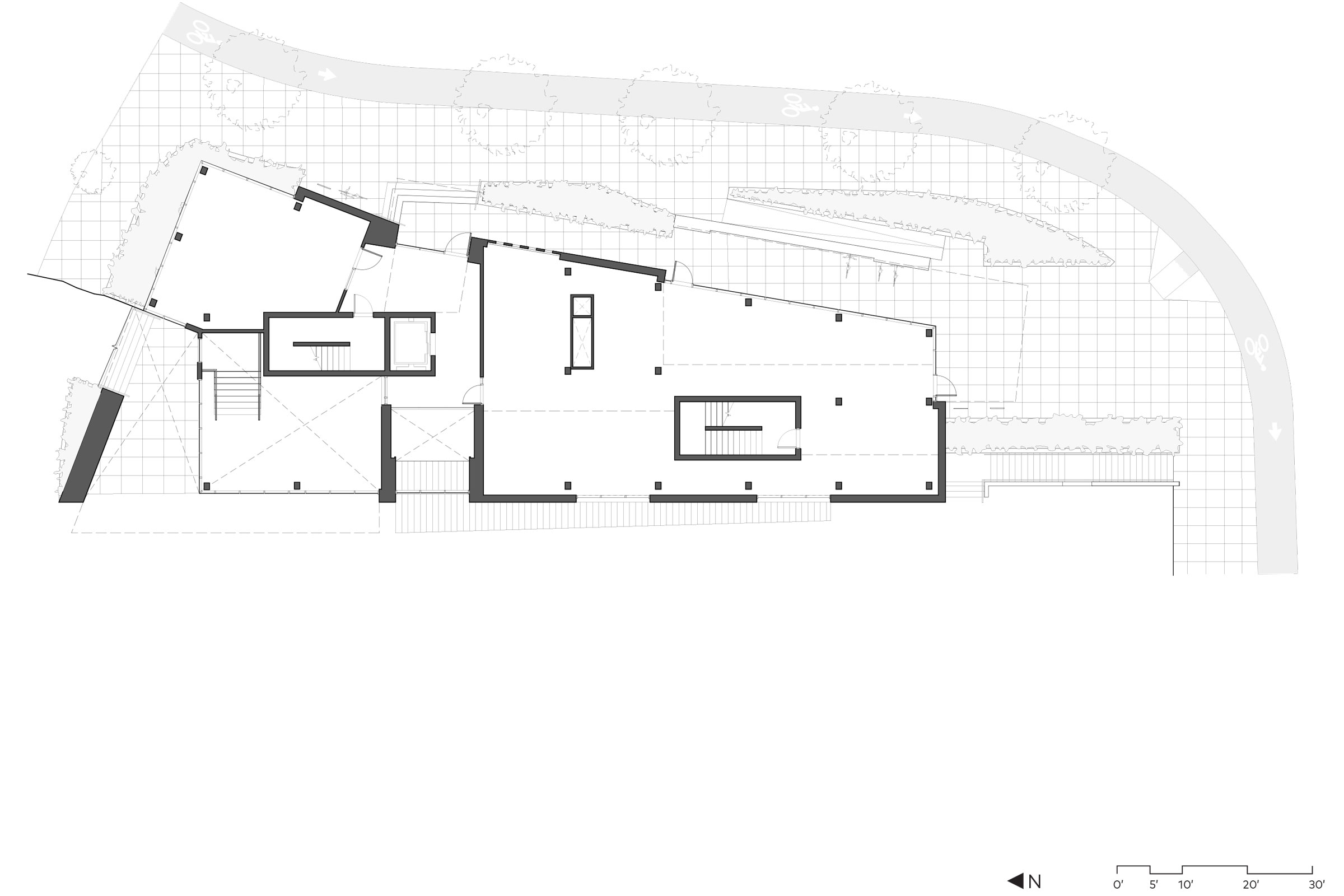
Courtesy of Skylab

